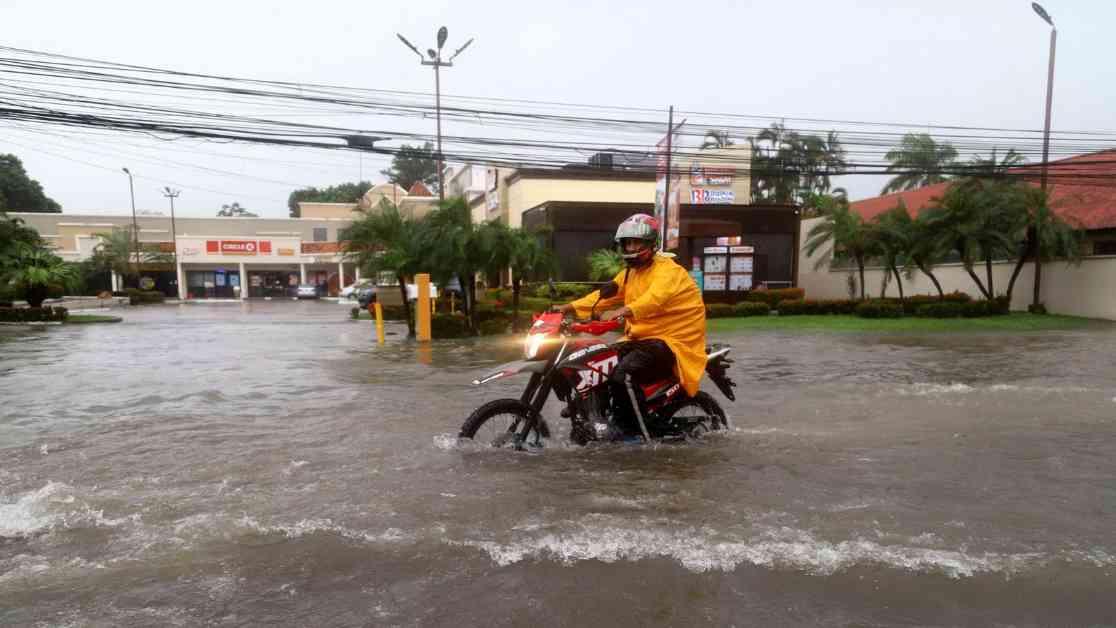Heavy rain from Tropical Storm Sara has caused severe flooding along the northern coast of Honduras. Over 1,000 people have evacuated their homes to seek shelter, prompting the government to declare a national emergency. Residents are being advised to steer clear of high-risk areas in the Central American nation.
In response to the storm, some individuals have waded through waist-deep water on the streets, carrying their belongings and pets to safety. The images of a motorcyclist navigating a flooded street and a bridge partially collapsing due to the overflow of the Cangrejal River paint a vivid picture of the challenging conditions faced by the Honduran population.
Weather forecasts predict that between 15 to 25 inches of rainfall will hit the north in the coming days, with some areas receiving up to 35 inches. Tropical Storm Sara is currently hovering near the Caribbean coast, close to popular tourist destinations such as beach resorts and ancient Maya ruins. Jose Jorge Fort, the national head of risk management, has highlighted the increased vulnerability of individuals living near riverbanks to flooding and landslides.
With wind speeds reaching 50mph, the storm is anticipated to bring about “life-threatening and potentially catastrophic flash flooding and mudslides,” as stated by the US National Hurricane Center (NHC). Additionally, there are concerns that Sara’s impact could extend to coffee production in Honduras, a significant concern for the country as the top coffee producer in Central America.
Following its passage through Honduras, Tropical Storm Sara is expected to bring heavy rainfall ranging from 5 to 15 inches across various regions, including Belize, El Salvador, eastern Guatemala, western Nicaragua, and the southern Mexican state of Quintana Roo. The NHC has projected that the storm will likely shift towards Belize in the coming days, potentially strengthening if it remains offshore.
The aftermath of the storm could have far-reaching implications for the affected countries, warranting close monitoring and preparedness for potential hazards. As communities strive to recover from the devastation caused by Tropical Storm Sara, the importance of proactive measures to mitigate risks and enhance resilience against natural disasters becomes increasingly evident.










